One of the most important aspects of a knife is the steel in the blade.
But at what point does a designer or super steel blade become overkill and an added, unnecessary expense?
by Leon Pantenburg
Disclaimer: I have used and own knives in A2, CPM 3v, 1095, saw blade steel, O1, D2, CruWear, Damascus, Elmax etc. The following is my opinion, and nobody had any input into this post.
Most knife users don’t need a knife with a super steel blade. For most of your knife tasks you might be best served with a common tool steel knife.
That should generate some comments and debate! So here we go.
I use and review knives on a regular basis year-round. My hiking, canoeing, fishing, deer and small game hunting addictions assure I will always need a good blade. And as a Quapaw Canoe Company guide and wilderness skills instructor for Big River Wild Adventures, my belt knife must be a dependable tool. My knives are loaned out, and I get feedback from experienced users and beginners.
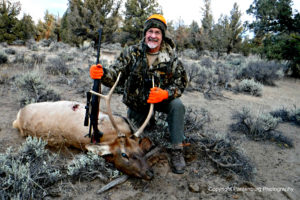
I gutted, split the rib cage and quartered this bull elk with a Bark River Sahara in A2 steel. At the end of the elk processing, the blade was still razor sharp.
I don’t have a favorite blade steel. But over the past few years, I’ve noticed a trend emerging among knife shoppers. Buyers often pass over the more common, less expensive knife blade steels in favor of the newer, more exotic types. I’m referring to such excellent super steels as CPM 3V, CPM 4V, Elmax, CPM 154, CruWear etc. I have blades in all of these steels, use them regularly and don’t want to give them up.
But the workhorse steels that served us so well over the years, such as 440C, 1085 and 1095 high carbon and A2, are often overlooked in favor of the latest designer steel. Some buyers won’t look at a knife made with a perceived inferior steel.
Mike Stewart, president of Bark River Knives, says if he could only use one steel in his knives it would be A2.
“There is nothing wrong about A-2,” he commented. “Extra toughness is kind of moot if you can’t break an A-2 blade. Extra edge holding is great but it then takes longer to re-sharpen. I’m afraid we have fallen into the Designer Steel trap.”
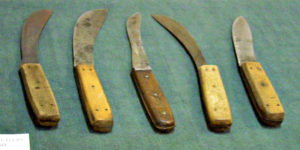
These well-used original knives, seen at the Museum of the Fur Trade in Chadron, NE, were all thin-bladed, carbon steel. Better knives than these are as close as your neighborhood hardware store.
Most people, IMO, will never need a designer or super steel blade. You can buy a better knife than the mountain men, frontiersmen, hide hunters or Eastern longhunters carried at any hardware store. In fact, those original knives most closely resemble the excellent Old Hickory carbon steel knives available at any box store.
So buyers are buying designer steels they will never be able to take advantage of. It’s like putting a 10-power scope on a lever action 30-30. By the time you get to the distance where a 10 power scope could be an advantage, the cartridge is beyond its effective range.
This designer steel trend means some of the best knife makers may be overlooked. Lon Humphrey has used forged 1095 steel. His blades can be sharpened to scary, wicked sharp, and they hold an edge. Pete Winkler, owner of Cross Knives and a “Forged In Fire” winner uses A2. Many of the L.T. Wright Custom Knives are in A2, and their inexpensive Bushcrafter is in 1085 high carbon steel. Fiddleback Forge uses A2. And Battle Horse Knives uses O1 tool steel. You can rely on any of these knives.
Before you pass up a solid, quality knife in a tool steel, ask yourself these questions:
How much do you have to spend on a knife? My kids are grown up and gone, and my wife and I are empty nesters. Now, I can justify investing in knives, guns and hunting trips. But several years back, I had three small kids at home who rated higher in the household budget than outdoors gear.
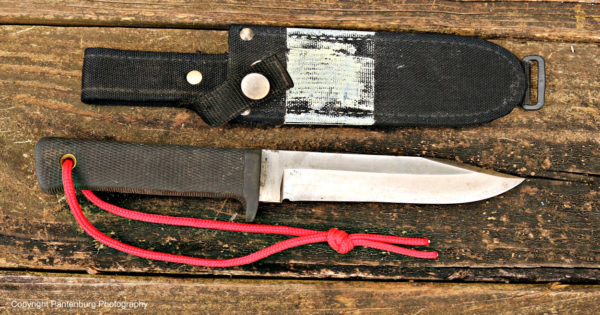
My Cold Steel SRK served me well for more than 20 years.
In 1991, I bought a Cold Steel SRK to use as my primary hunting/survival knife in the Idaho backcountry. I paid about $50 for it then, and the knife served me well for some 20 years of backcountry big game hunting. It was loaned out a lot and probably field dressed and skinned 50 deer. It was used on several elk, and the SRK was used a lot for beheading fish.
The blade was Carbon V, and it held an edge very well. During all those years of use, I never needed a better knife. Nor did I ever feel the SRK wasn’t up to some bushcraft task. In fact, the SRK could easily have kept its spot as my go-to knife. (Order yours here.)
Later, I used a Cold Steel Master Hunter, which sells for about $100. It performed very well. Order a Master Hunter
What will you use the knife for? If the knife will be part of a collection, and probably never used, beauty is a consideration. You can sacrifice utility for looks. (Think Damascus steel.) If the knife is a user, it will inevitably get some dings and scratches and show some honest usage wear. If the knife is used for its intended purposes, and not used as a pry bar, screwdriver, paint scraper, wire cutter etc. there will never be a problem with that blade. In more than 50 years of using knives in the field, I’ve never broken a blade.
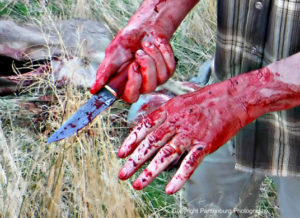
I used this Jesse Hemphill Custom Damascus to gut and skin an Oregon Mule deer. I don’t own safe queens.
How hard is the blade? A hard steel may be more brittle and chip during hard use. A softer steel might get a rolled edge. Either will be dull. Some of the harder steels will hold an edge seemingly forever, but they also may be a lot harder to sharpen. For the beginner, or the person who hasn’t learned sharpening, this could be a problem.
Can you sharpen the steel? Does this matter? After all, many people send their knives to a pro for sharpening. Many chefs do. But at some point, any knife will have to be sharpened.
Personally, I have knife sharpening OCD, and will strop a blade sometimes just because I want to. Whittling small slivers of paper gives me joy. At hunting camps, I sharpen everyone’s knife.
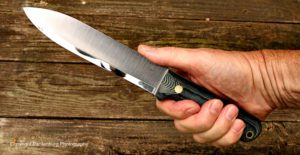
The L.T. Wright Genesis 6 celebrates Larry Robert’s accomplishments on Alone.
What sharpening tools will you need? Tool sharpening is a survival skill, and anyone who uses tools should know how to keep them sharp. I take the full compliment of whetstones and strops to camp, but rarely use the stones anymore. A quality tool steel knife will probably not need sharpening in the field if it is properly cared for and maintained.
My appreciation for A2 soared after I met Alone contestant Larry Roberts at the 2019 BLADE show. Each Alone contestant can choose ten special items to help with shelter, water, fire, and food, and the winner is the person who lasts longest alone in the wilderness.
Among his ten items for Season Two, Roberts chose to take the L.T. Wright Genesis Scandi in A2. The Genesis was used daily. Roberts carved spoons, made traps, fashioned a spear, and did countless other projects. Roberts was the runner-up; he ended up staying for 64 days.
In Season Five, Roberts took a bigger L.T. Wright Genesis, also in A2 steel. The Genesis 6, Larry Roberts model knife, celebrates his accomplishment. During his time in Mongolia , Roberts told me, he never sharpened his knife. What could be a better endorsement for A2 edge-holding ability?
Cost: So far, I have not heard of a Damascus user knife, and that may be because of the cost. Quality Damascus steel is hand made, and the steel is heated and hand-forged and folded onto itself many times before the final grinding and shaping. (That’s where the neat patterns come from.) Of necessity, such steel is labor intensive and expensive to produce. The last price I heard for quality raw Damascus blade-size blanks was about $55 per inch.
Do the math: A four-inch blade will cost about $220 just for the steel in the visible blade. Add labor, and you end up with a spendy knife. If you want a pretty knife, Damascus is what you need. But in a common utility knife, the extra cost of Damascus is wasted money. A 1095 carbon steel blade will do everything you need. Designer steel can add 20 to 30 percent to the retail cost of a knife.
Is there a valid comparison between a super steel and some of the more common tool steels? Well, there are several comparison charts around. But what does all this mean to you, the average consumer?
Well, do some research on steels before investing. You might find your grail knife has a tool steel blade!
Please click here to check out and subscribe to the SurvivalCommonSense.com YouTube channel – thanks!

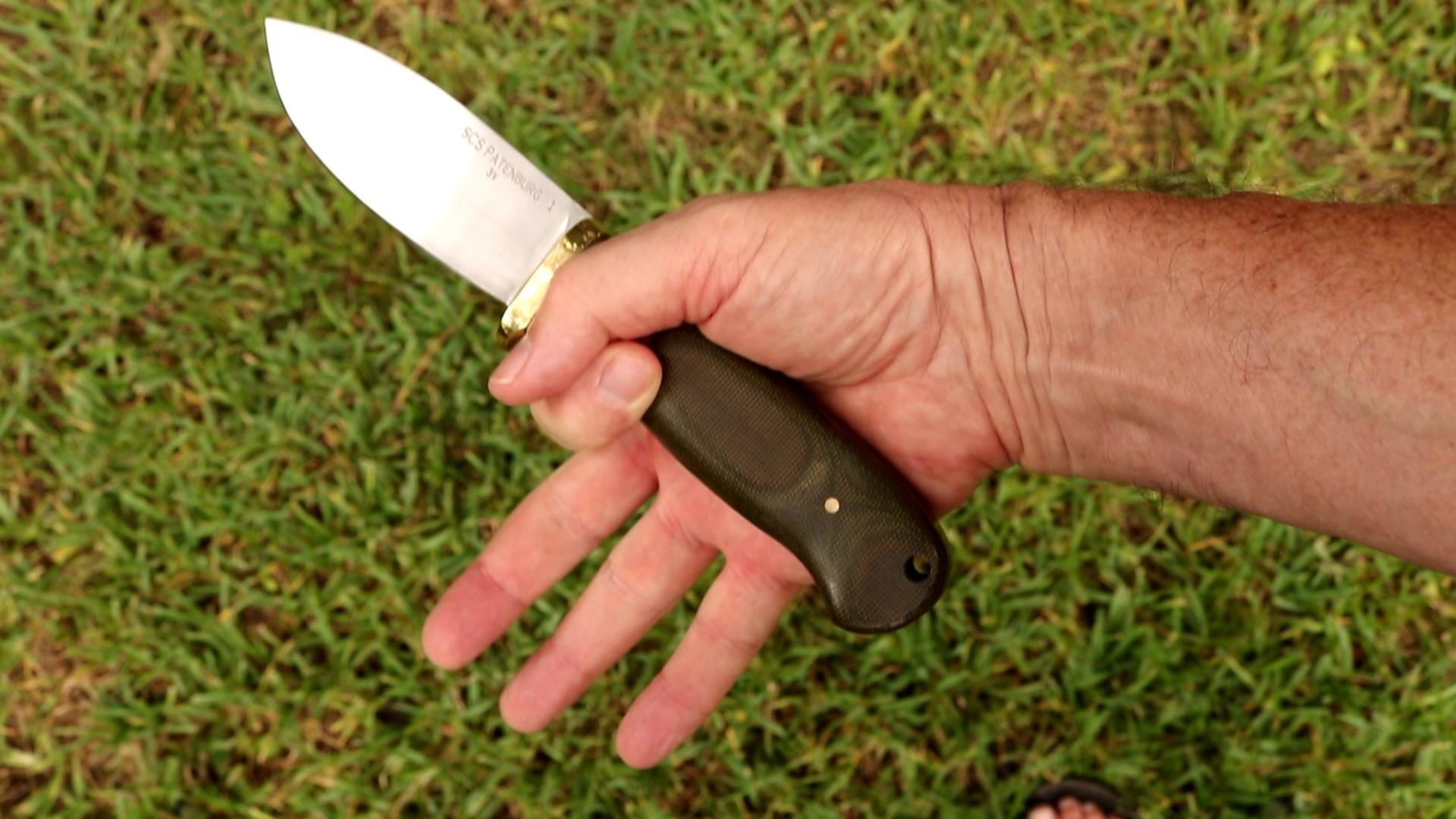
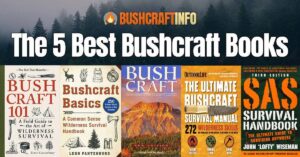
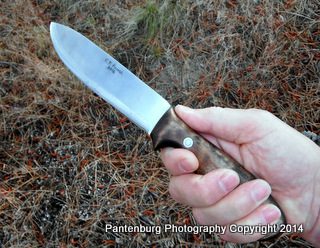
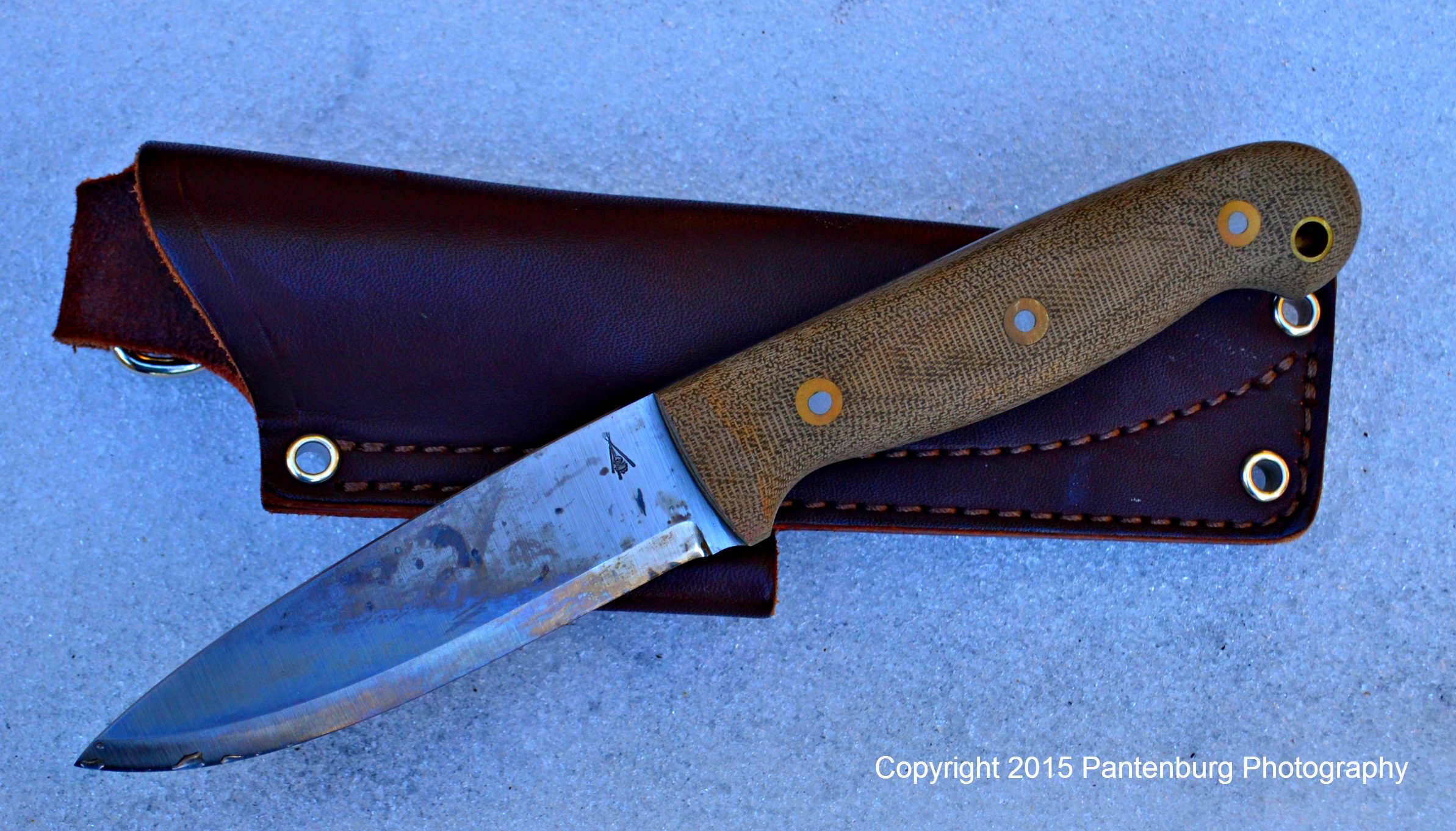
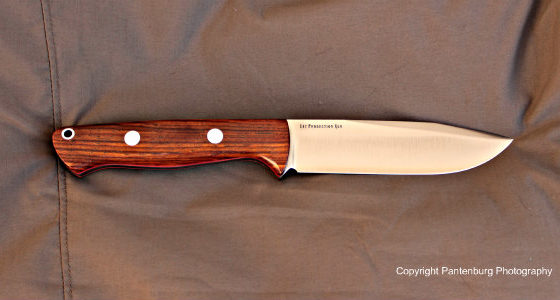
Leave a Reply